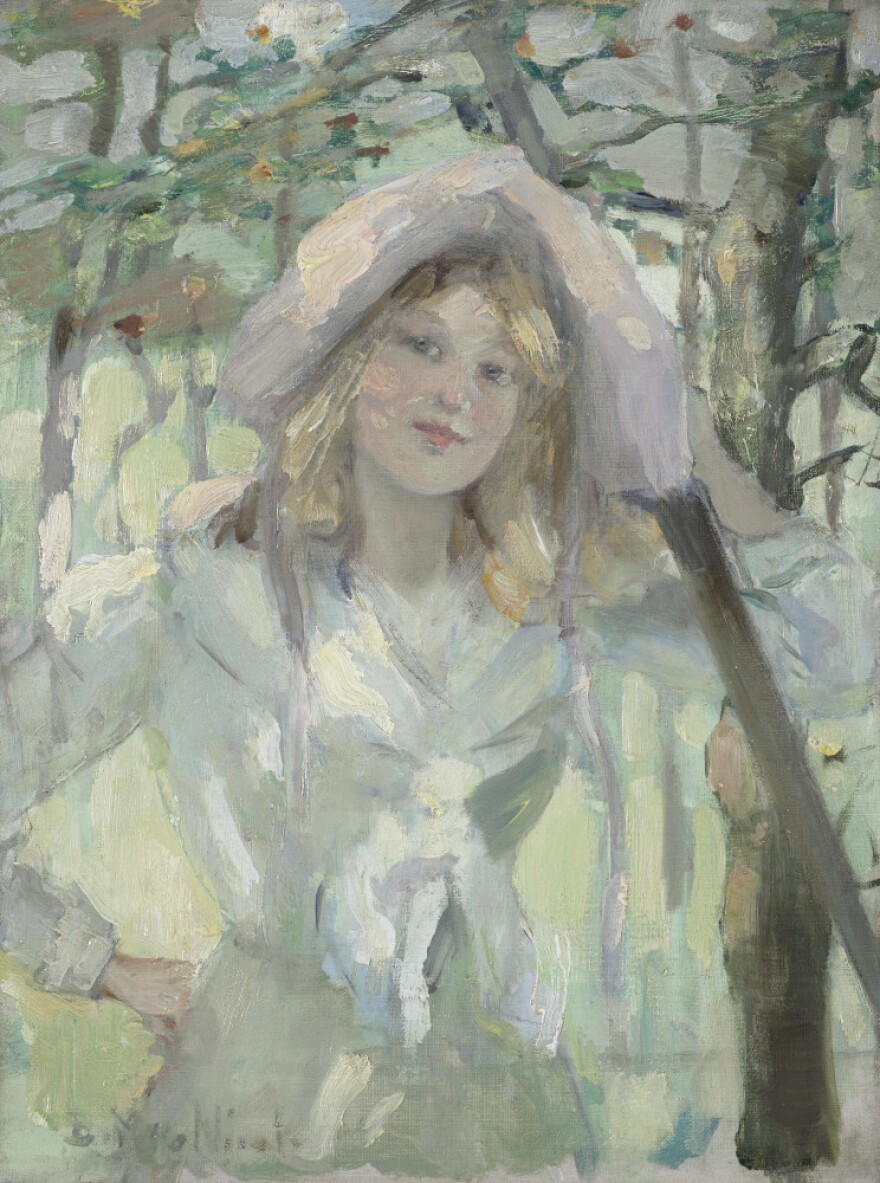A couple of weeks ago I introduced you to a group of painters from Glasgow, Scotland that came to be known as “The Glasgow Boys.” [They were active from roughly the 1870s to the early 20th century.] They were distinctive, particularly in what they chose as their subject matter. By choosing to paint average people from the Highlands instead of traditional subjects, they set themselves apart from what established painters were doing.
But they weren’t the only painters from Glasgow. A group of women also forged an identity that was far more varied in style than the boys.
The Glasgow School of Art was one of the first ones in the UK to admit women[, doing so as early as 1848 -] just three years after it opened its doors. Many of the young women who studied there rented studio space in the city together, and that contributed to a growing sense of solidarity. In 1882, several of them formed “the Glasgow Society of Lady Artists.” They wanted to support each other’s work and have an organization that would help promote what they were each creating.
The very next year, the society began staging annual exhibits, indicating they felt as though the established shows weren’t taking their work seriously. The group was successful; it grew; and it raised enough money so that by 1895 it was able to buy a house in the city to serve as its headquarters. Two years later it opened its own gallery in time to host the Society’s fourteenth annual exhibition. Today the group is known as the GLASGOW SOCIETY OF WOMEN ARTISTS and has more than 160 artist members and almost 50 members who aren’t artists.
The most famous names I would want you to know from the group would probably be Frances MacDonald and her sister Margaret, Bessie MacNicol, Jessie Marion King, and Helen Paxton Brown. Some of the women got involved with the design movement and applied their artistic abilities to book illustrations, posters, even wallpaper and fabric patterns. Several of them embraced more formal Modernism than did the Glasgow Boys.
When Bessie MacNicol died in Glasgow in 1904 when she was only 34, she’d exhibited her work in shows from Munich, Germany to St Louis, Missouri. Glasgow newspapers called her death a loss for Scottish art and said she was “worthy to rank with the best of Scotland’s artist sons.” Three Ladies of Fashion and The Lilac Sunbonnet are the two most interesting of her works held by the National Gallery of Scotland
“The term ‘Glasgow Girls’ was coined by critic William Buchanan in an essay he wrote for a Glasgow Boys exhibition in 1968. The Glasgow Girls didn’t have their first exhibit under that moniker until 1990. Better late than never.






